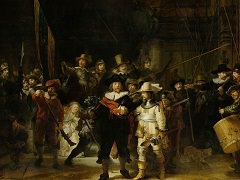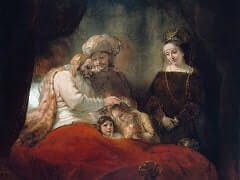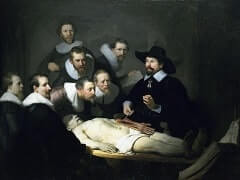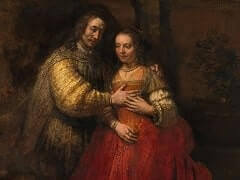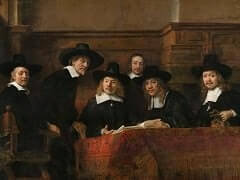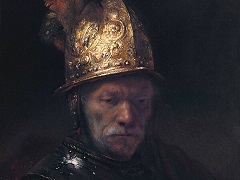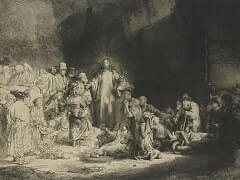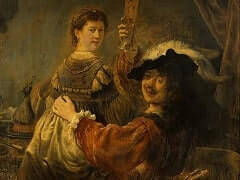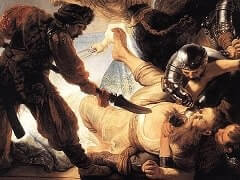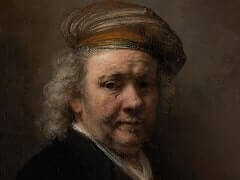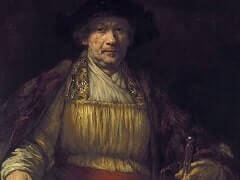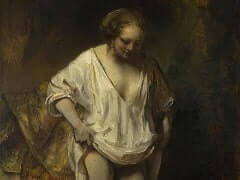Artist in his Studio, 1628 by Rembrandt
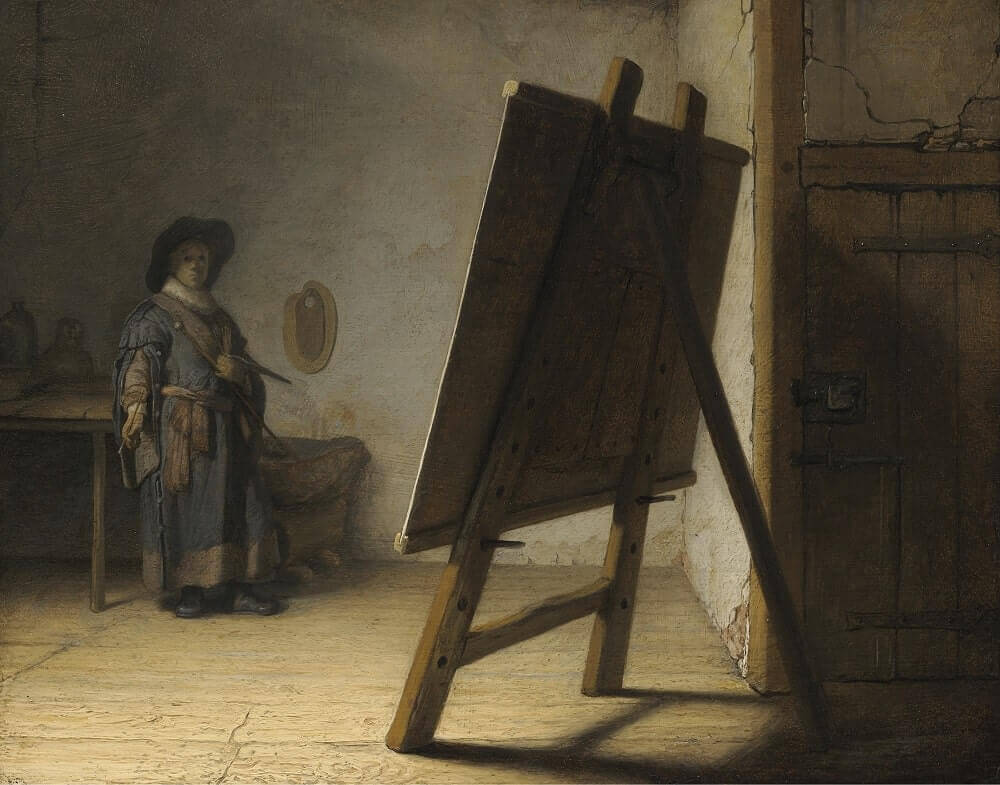
The theme of The Artist in his Studio was a popular one in seventeenth-century Dutch art, and Rembrandt returned to it several times in his drawings and etchings. On each occasion he did
something original with it. In this early example the image is very striking. In contrast to most Dutch artists who made of the theme a sumptuous, or at least cluttered, genre scene, Rembrandt
depicts a bare room with the plaster cracked and peeling from its walls and with a large panel on the easel, its back evocatively turned towards the spectator. Several feet away from this, the
tiny artist stands muffled in a long winter coat and wearing a hat, as if literally posing for his picture.
In this small painting, the young Rembrandt seems to represent the daunting moments of conception and decision necessary to the creation of a work of art. An artist confronts his easel in a studio
bare of everything except his essential tools. This drama, with its emphasis on thought rather than action, is intensified by the expressive use of light and shadow. The painting's daring perspective
is also important: the distant figure of the painter seems dwarfed by his work, looming large in the foreground.


